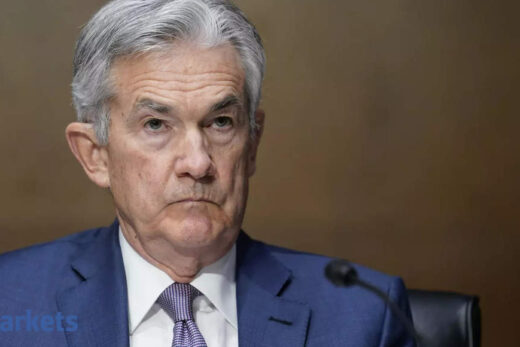At the same time, potent but risky hooch is selling briskly, although the lawman — the Federal Reserve — is almost at the door.
Indian government bonds are the “good stuff” and must sell. It’s the only way tax-strapped authorities can raise money and spend it to shake the economy out of its Covid-19 stupor. Yet a yield of just about 6 per cent on 10-year rupee paper from a barely investment grade sovereign has none of the kick of the near-21 per cent rate of return offered by a D-rated private borrower on a five-year note.
That’s how much Kesoram Industries Ltd., a Kolkata-based cement manufacturer that defaulted last year, recently gave on its 16 billion rupees ($221 million) in junk bonds, which got sold to the likes of Goldman Sachs Group Inc. and Cerberus Capital Management.
But rather than the gamblers, it’s the vigilantes — pesky investors never happy with lax fiscal and monetary policies — who seem to be bothering the Reserve Bank of India. The RBI, which has the job of raising money for the government, invited fixed-income investors to join it in a tango and “forestall a tandav” — the solo dance of destruction of the Hindu god Shiva. (I didn’t make this up. See the bank’s March 19 monthly bulletin for a veiled threat involving acrobatic moves and colorful imagery around bond vigilantes, who “prowl markets, guns holstered and saddled up.”)
However, right now the Fed is the only deity whose wrath — and gyrations — emerging markets truly fear. It’s the same story from Istanbul to Mumbai, with one key difference: Turkish President Recep Tayyip Erdogan has sacked three central bank chiefs in two years, while Prime Minister Narendra Modi, already on to his third RBI governor, is more concerned right now with unseating the state chief minister in upcoming elections for West Bengal, where his party has never been in power.
That isn’t enough to impress bond buyers. Foreigners have pulled out billions of dollars from India’s bond markets over the past 12 months. Even domestic banks have been shunning debt auctions ever since the government’s Feb. 1 budget delivered the unpleasant news of a planned 6.8 per cent deficit for the upcoming fiscal year, on top of a 9.5 per cent shortfall in the year that will end March 31.
While anxiety in the U.S. market stems from the prospect of above-normal growth and inflation, India’s economy might permanently lose 11 per cent of its potential output, according to Crisil, the local affiliate of S&P Global Inc. At the eve of the nationwide lockdown last March, the growth rate had already halved — to 4 per cent from 8.3 per cent in March 2017. Then came the virus, and an estimated 8 per cent tumble.
Vaccinations are picking up pace, but if the ongoing second wave of infections overwhelms the population, even sporadic, localized lockdowns will make the recovery sluggish. Add the risk of a taper tantrum, a real possibility if the Fed is forced to abruptly rethink just how fast it can afford to let the U.S. economy run before reining it in by raising interest rates. That could accelerate capital flight out of emerging markets. Currencies could swoon, like the Turkish lira this week.
Even though the rupee is the best emerging-market currency so far this year, 6 per cent isn’t adequate risk compensation for 10-year notes. However, it’s also true that unlike in 2013, there’s no unsustainable current account deficit to worry about. So there’s a chance that the fear of the Fed won’t creep into Indian markets as viciously as it did back then. In that case, it would be a better gamble to buy super-pricey Indian equities or distressed bonds offering 21 per cent.
Vanilla government bonds are paying so little in Asia that insurers are being forced to take to take credit risks to pay policyholders. “Take Vietnam, for instance; who would ever have thought that we would have a 2 per cent interest rate for 10-year government bonds in a country that’s BB rated?” Stephan van Vliet, the chief investment officer of Prudential Corporation Asia Ltd., said at an AsianInvestor conference recently. “But the only way to deal with that is to find attractive credit spreads.”
Thus, neither the vigilantes dumping bonds nor the gamblers raising their bets are being wholly irrational, even though one of them may be laughing all the way to the bank next year, while the other becomes the butt of bar jokes.



